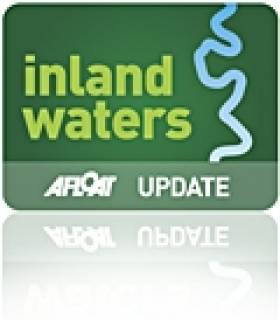Displaying items by tag: Sailing Raid
#INLAND WATERWAYS - The Lakelands & Inland Waterways Ireland Sailing Raid is a unique event combining sailing, adventure, exploration and racing in the setting of some of the most stunning countryside in Western Europe.
On 14-21 September a fleet of about 40 'open' boats – including the 5.5-metre Shannon One Design, the 4.5-metre Water Wags and various traditional styles and new builds all under 7.5 metres long – will sail 190km from Lough Erne in Northern Ireland, through the River Shannon and across the great lakes of Lough Ree and Lough Derg to Killaloe.
Although it will be a competitive race, there will be some time left to enjoy the scenery and the Irish hospitality of the three participating yacht clubs along the way. Some will come for the racing, some for the scenery, some for the spirit of comraderie – but everyone is sure to enjoy the craic.
To maintain the maritime nature of the event, the Lakelands & Inland Waterways Ireland Sailing Raid will be based as much as possible on the water.
Accommodation will be provided in motor cruisers for those who want it, while some will be able to camp near the river bank and others will make their own arrangements. Each stopover will therefore bring together participants in a 'floating village', with several receptions and festivities in the evenings.
The event is being organised in close collaboration with Waterways Ireland, with logistical support will be provided by the three main yacht clubs on the route: Lough Erne Yacht Club, Lough Ree Yacht Club and Lough Derg Yacht Club.
Members of the local clubs are being invited to take part at a preferential rate, while raid competitors from all over Europe will provide an international element to the event.
For more information and application details, visit the Sailing Raid website at www.sailing-raids.com.





























































